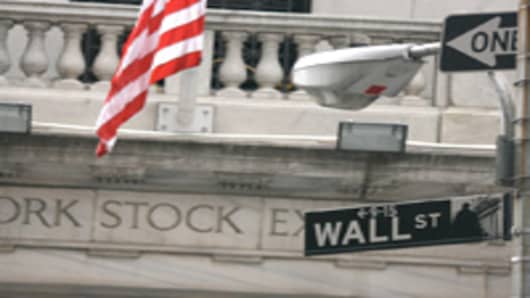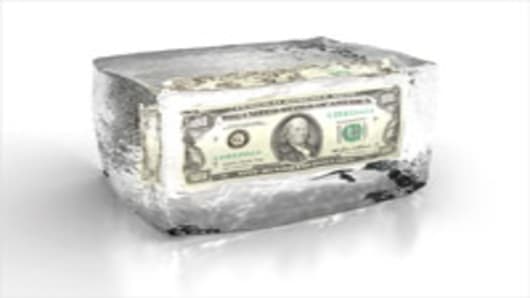Investors accustomed to seeing strong stock market gains in the October-February period, may be wondering what this year will bring after the stunning rally that began in April.
Much of that has been based on the assumption that recession would yield to recovery a
nd then expansion. There is, however, a contrarian view that says the market is already way ahead of the economic realityand that the rally to date, never mind the end-of-year bounce, is wishful thinking.
Call it the what if scenario. Suppose we are in for a double dip recession, or an anemic, flat-line recovery? What should you do with your money if the Dow Jones Industrial Average drops like the temperature this winter?
Whither the Economy?
“It depends on the timing of the pull back, and how it happens,” says Larry Adam, chief investment strategist at Deutsche Bank, says, “If it’s a deep global recession, there are not many places to hide. Basically, you want to be in treasuries and cash.”
In this case, Adam says, defensive sectors like health care, energy and consumer staples, as well as dividend-paying companies will outperform. He says dividend-paying companies haven’t participated in as much upside, and you get the benefit of the dividends that are being paid.
“If it’s a U.S.-centric recession, you can still have exposure overseas," he explains. "China and the emerging markets will continue to do well.” In such a scenario, Adam recommends gold because the dollar would continue to be weak.
Diversify, Diversify, Diversify
That said, there is no substitute for diversification.
Having exposure to bonds when the market is falling, and equities and commodities on the other side, is crucial. He says you need access to the different styles—growth versus value, small versus large cap, international versus domestic. Adam estimates that 5-10 percent of a portfolio should be in commodities.
Stacy Francis, president of Francis Financial in New York City, couldn’t agree more.
“Part of the reason that people found themselves getting burned in the last year or so, was they were not as diversified as they thought they were," she says.
Now, she says, people need to look more carefully at the types of stocks, bonds and asset classes they are holding. In a down economy, for example, “it’s not only about having bond exposure, but inflation-protected securities and high-yield bonds.”
Francis also suggests having a small portion of your portfolio in REITs (real estate investment trusts), and commodities. Typically, she says, commodities move more independently of what’s going on in the stock market and are a good inflation hedge.
Dan Solin, senior vice president at Index Funds Advisors and author of several financial books including the “The Smartest Investment Book You’ll Ever Read,” also says that a globally diversified portfolio is the way to go.
Solin adds, however, that “trying to anticipate economic trends is probably the worst, least productive thing you can do. You should determine an asset allocation that is appropriate for you and stick with it through good and bad.”
The best way to determine what risk is appropriate for you and your family, he says, is to take an asset allocation questionnaire that attempts to bring out issues related to risk. The default asset allocation, which is appropriate for most people, is 60 percent in stocks and 40 percent in bonds.
To achieve a globally diversified portfolio, Solin recommends mutual funds like the Vanguard Total Markets Fund, which replicate the domestic stock market. For international exposure, he suggests the Vanguard Total International Index. Likewise, the Vanguard Total Bond Index is good for a cross section of treasury bills and investment grade bonds.
More Complicated Options
For those who want more active management, Adam recommends hedge funds during times of uncertainty. “Hedge funds are more flexible,” he says. “They have the ability to go both long and short.”
“If you think that certain companies or sectors are going to get hit particularly hard, hedge funds can short those sectors, and invest long in the ones that you are confidant in.” Being able to long short commodities, currencies, and interest rates, is important, he says.
Another way to protect your portfolio in a downturn, Adam says, is to buy put and call options, which essentially give investors the right to either buy (call) or sell (put) a stock at a future point in time at a set price.
“Buying puts acts as an insurance policy for a portion of your portfolio. In essence, you have to pay a premium out-of-pocket to hedge a portion of your downside exposure,” Adam says. Puts are flexible because you can tailor the strike price and strategy, and are most valuable from a return perspective if you have a significant pullback in the equity market.
“Calls provide less true downside protection as you receive a premium to give someone the right to buy your position at a predetermined strike price, and perform best when the market is stagnant or trades only slightly lower,” Adam says.
Don’t Forget the Basics
One of the most important things that people can do if they’re concerned about financial instability, says Francis, is to build up their reserves. And, if they have not done so already, pay off high-interest debt.
“It gives options that you wouldn’t have otherwise.” She points out that those who faired best in the last recession had sufficient cushioning so they weren’t forced to sell their home in foreclosure.
So, should the market go down, diversify, hedge and try not to sweat. Have the longer-term approach.
“Looking at it that way,” Francis says, “will help ride out the ups and downs that we have seen and will continue to see.”



